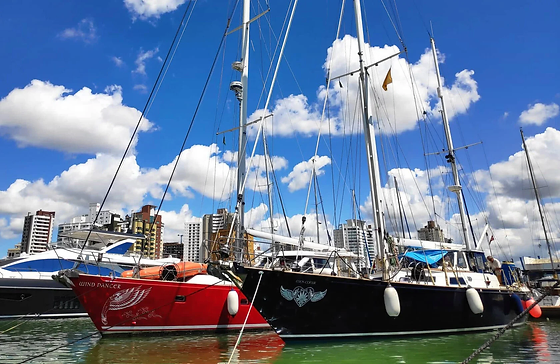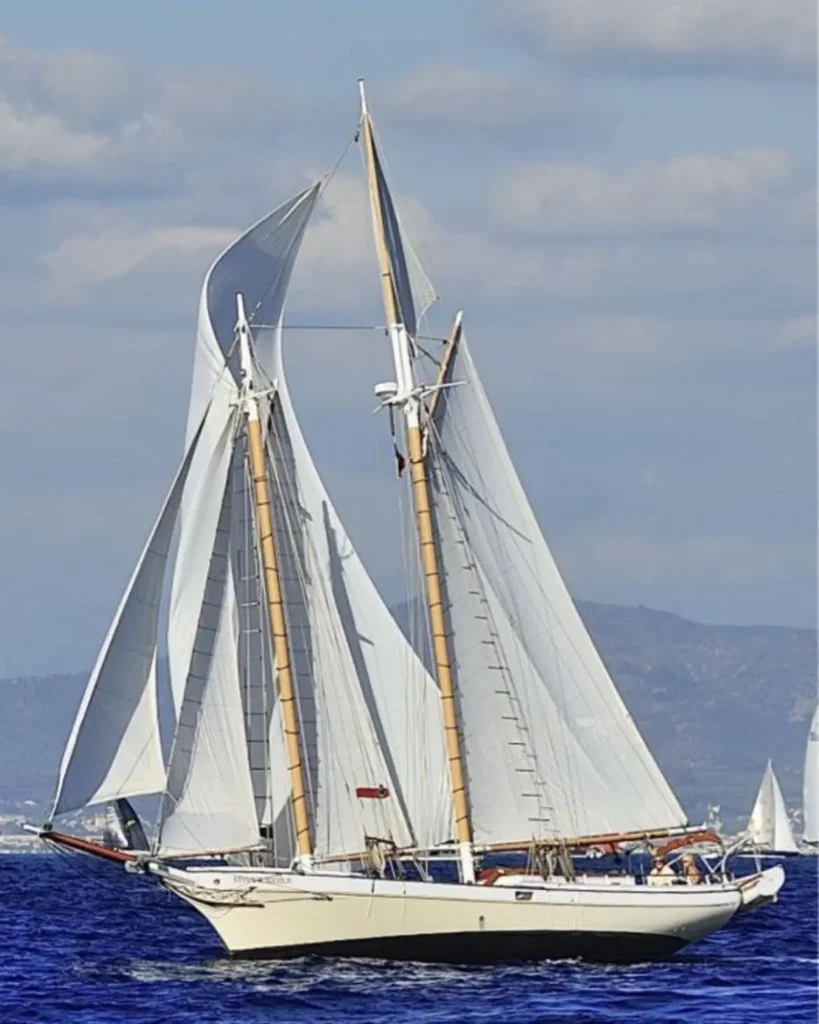
We manufacture Sailing Yachts for Sale UK and other EU Countries. Check our website for more info about sail boats, motor boats, and yachts
The “Rules for the Classification and Certification of Yachts” of Bureau Veritas (BV, 2006) place a strong emphasis on sailing yachts. The philosophy for determining hull scantlings consists of presenting different criteria for the calculation of design accelerations and loads. Still, water and wave loads are provided for mono- and multi-hull sailing yachts.
Specific global loads acting on the hull and caused by rig tension are also included. Particular attention is devoted to bottom slamming loads, where the case of sailing yachts is specifically assessed, and the loads induced by the keel weight. Where the scantling formulae for plating and stiffeners are concerned the approach is the same for both motor and sailing yachts, the difference being already inherent in the determination of design loads.
Manufacturer of Yachts for Sale

Germanischer Lloyd, in their rules for “Special Craft” (GL, 2003), dedicated particular attention to sailing yachts. In chapter 2, yachts with a length greater than 24 meters are considered, while chapter 3 is dedicated to yachts and boats up to 24 meters. In this latter part sailing dinghies, sailing yachts, and motorsailers are all considered. In the first section, all the main dimensions and design loads are specifically defined for sailing
yachts.
The Rules provide hull loadings in terms of pressure on the bottom and side shells as a function of the ship’s scantling length; in the same way, pressures on the deck and superstructures are also provided. For all the structural elements specific reference is made for sailing yachts. The scantlings of hull plating should satisfy particular characteristics of the shell laminates in terms of total glass weight.
The section moduli of the transverse and longitudinal frames of the hull and deck structures are given for sailing craft and motor sailers in very clear tables. Reinforced bulkheads are required in way of the mast together with an increase of floor modulus in the region of the ballast keel connection to the hull. Chapter 2 refers to motor and sailing yachts with a length between 24 and 48 meters in the first part and over 48 meters in the second.
Design loads, in terms of pressure on the hull and on the deck, are provided with different longitudinal distributions for sailing and motor yachts, while the same scantling formulae are valid for both. Three different sections for steel/light alloy, composite, and wood materials are provided. As in the previously cited chapter 3, reinforced bulkheads are required in way of the mast together with an increase of floor modulus close to the ballast keel.
Manufacturer of Yachts for Sale UK
In the case of yachts with a length over 48 meters, depending on whether they are high or medium-speed vessels, reference should be made to the High-Speed Craft or Seagoing Ships GL Rules. The RINa “Rules for Classification of Yachts” (RINa, 2007) consider the sailing yacht hull structure in the same way as for motor yachts, the only difference being the pressure loads calculated for displacement vessels. Rules applicable for craft under 12m are rare.
However, a complete set of rules for small 6m and 12m S.I. racing yachts was published by RINa in 1984 (RINa, 1984). All the design aspects were considered from the material selection, up to the hull structure typology (transverse or longitudinal), keel-hull connection, outfitting and mast and rigging scantling.
The primary criterion for hull material selection for the pleasure boat industry is reducing cost. Thus woven roving or mat E-glass fibers in iso- or ortho-polyester resins are the most common combination. Improved properties are achieved through higher strength and modulus fibers such as aramid and carbon. Similarly, increased fatigue resistance, higher shear strengths, and reduced osmotic blistering properties are possible with epoxy and vinyl ester resins.
Materials used for Yachts for Sale UK
When sandwich materials are chosen balsa wood or PVC cores are usually employed. The alternative metallic materials are marine-grade steel and aluminum alloys. Wood is still used in niche markets, often in combination with cold-molded construction techniques. The main advantages and disadvantages of each material (except wood) are summarised in Table 3. For higher-performance vessels where weight or stiffness is a driving factor in the design, alternative reinforcements such as unidirectional or multi-axial fabrics may be preferred.
In racing yachts materials selection is often governed by handicap measurement systems (e.g. IMS, IRC) or class rules (e.g. ACC, IMOCA), or for a larger number of yachts, standards such as those given by classification societies (ABS, DnV, Lloyds) or the ISO. These often provide panel weight limits, limit fiber modulus and define minimum strengths. Aramid, aluminum or polyethylene honeycomb cores and
pre-preg skins are widely used for performance yachts.
